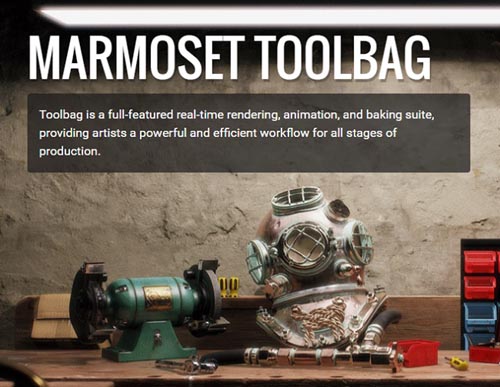

In Marmoset Toolbag you adjust the gloss value with the “ Specular Sharpness” slider, and if you save a gloss map into the alpha channel of your specular map it will automatically use that for your gloss value.

Darker gloss values are used to define matte materials, while brighter gloss values are used to define glossy materials. Gloss Map – The gloss map is used to define the “sharpness” or “roughness” of the specular reflection highlight, essentially how wide or narrow the highlight is. Specular Map – The specular map is used to define both the color and strength of the specular reflection highlights. You can add extra normal map detail to your baked map to help further define material properties, with the Nvidia Normal Map filter, Crazybump, nDo and other similar programs. Your normal map will be either generated from a high resolution model, or generated from a 2D bump map. Normal Map – The normal map provides per pixel lighting/shading information. Note: Your specular and gloss values apply to dynamic lights as well as the default environment lighting.ĭiffuse Map – The diffuse map is your basic color texture, here you will define the color information for your materials. There are more advanced features of the Marmoset Toolbag rendering/shader system, but for the sake of simplicity we’re going to limit this tutorial to the four common texture maps in the default shader. Let’s start by explaining what each map does and how it will relate to the Marmoset material system. Essential Terms:įirst things first, this tutorial is covering the Marmoset material system and how to achieve the most from your diffuse, normal, specular, and gloss maps while representing a variety of material types. I often get asked how to make “X” material type in Toolbag, so I decided to throw together an asset to help explain how the Marmoset Toolbag material system works and display the type of art content I create to mimic various real world material properties.ĭownload the camera asset to follow along and view in full 3D glory inside of Toolbag, here. However, some of the concepts of reference collection and material properties are still valid. The material values listed in this tutorial are generally not accurate, nor suitable for use in a modern PBR workflow. Some techniques offered in this tutorial remain very helpful, however, shader setup and user interface may not apply directly to Toolbag 2/3. Note: This tutorial was created for Toolbag 1.


 0 kommentar(er)
0 kommentar(er)
